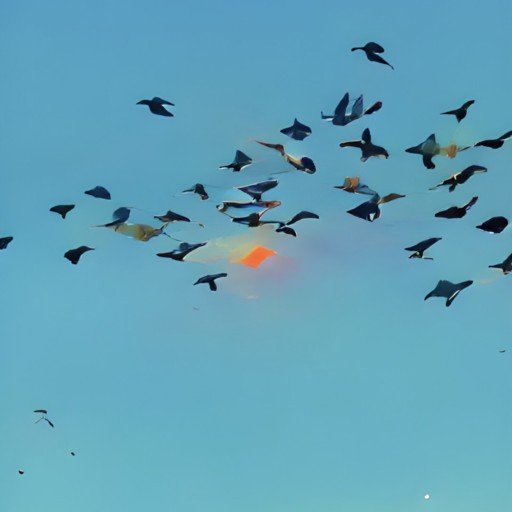In the world of blockchain, people are building both fungible and non-fungible tokens (NFTs). NFTs are often used to represent works of art, though they also have other uses. Tyler Rodrigues, also known as “withspaces (W/_),” is an NFT artist and professional collaborator who has developed designs for his projects and others as a contracted designer. These days, he’s the co-host of YouTube’s own CNFT News and an Environmental Artist for the widely popular Clay Nation.
In a recent interview, Tyler discussed his beginnings in Cardano and offered insights into his journey with collaboration. The great value we see for our readers is that these insights that come here from the world of NFTs also cross over to our tool-makers and Project Catalyst community members, who make up a big share of our readers.
On His Beginnings
Benjamin: In the famous words of Nardwuar, I’d like to ask: “Who are you?”
Tyler: I’m withspaces (W/_), or Tyler. I love art, and I love tech. That’s kind of at the core level. And obviously, the NFT space brings all that together. So yeah, I guess that’s who I am.
Benjamin: Tell us about your artist’s name, “withspaces (W/_).” What does it mean to you?
Tyler: I was just thinking about it the other day. There is a funny origin story about me, in my early teens, adding spaces to my then artist name to make it ‘T Y L R.’ But I keep it around these days because I’m working in 3D…everything. Everything about working with space is so important in this field. Even for 2D images, manipulating space is very important. You gotta think about it differently than when you are working in other, more creative mediums.
Benjamin: Take us back to when you first got into making NFTs on Cardano, back to the start of many of your collabs. How did that take place?
Tyler: Yeah, I got paid for some art-related work in Bitcoin and started paying more attention to the blockchain space. I love art and tech, so when I heard about Cardano for the first time it was also when I was learning about NFTs. It was like a month or so before Spacebuds came out. I remember I didn’t know where to follow anything because there was not really a community at the time. So I ended up creating the Cardano NFT subreddit. I figured trying to moderate that would be a good way to stay on top of things. That’s where I met CardanoBits. We both kind of pushed each other more, and that’s when things really started to come together.
Benjamin: What area of work were you focused on, and how were you creating relationships?
Tyler: I would say definitely in more of the limited-art scene. I like trying to bring people together. I really believe in Karma, and I also enjoy setting people up or putting two people together that would work well. So, yeah, soon after CardanoBits and I started talking on the subreddit, we started working on all these collaborations for the CollabBits collection. It was during that he minted out some of my first pieces.
Going off of that, I eventually started working on one of my favorite projects, the 31 weeks book. I feel like that was the culmination of everything I’d worked on up to that point, all the different connections I was able to make. Because all those little projects I worked on naturally got me closer to all these artists in the space.
Note: According to its listing in one marketplace, the 31 Weeks NFT contains a nearly 300-page book “highlighting most of the major Cardano NFT projects in the first 31 weeks of the existence of the space.” The 805 of the NFTs that were minted were part of an open mint in epoch 303. Along with links to all the projects, it also includes art graphics and a brief history or personal story about the pieces. Though he receives no royalty on the resale of this collection, Tyler hopes it can help play a role in helping to share the history of the early days of the NFT space in Cardano.
On Developing the Skill
Benjamin: How do you think you developed the skill of collaboration?
Tyler: College is where I started loving to work with other people like I do now. I went to Roger Williams here in Rhode Island. I roomed with some other guys; we were all in the architecture program together. We were all really into the Arts and had our little niches. I remember we’d do the craziest stuff. It was great; we had four minds on any idea and worked well together. I remember we always had all these thoughts bouncing off each other. It’s something you can’t do alone. Having so many people on one thing really makes so much more possible.
Benjamin: You seem naturally excited about bouncing ideas off each other. What’s an example of something you guys built together?
The collaborative artist then explained that his school would sometimes host events where they’d show student art, but they weren’t well attended. Wanting to get more eyes on all the artwork, the four roommates began putting together some truly unique college parties.
Tyler: I think probably one of my favorite things we did together was put on these art events set up like college parties. We’d have people come, and we’d have music and lights and stuff. Everywhere around would be art that we, or other people, created. Sometimes we’d even have people coming who didn’t even go to our school just to check out all the art.
Two-thirds of our tiny dorm room would be taken up by a band, their drumkit, DJ set, and a bass player. And while they played, people could look at our walls that were covered in random stuff people made, even pieces they created for that party. That was probably one of my favorite things the four of us did together.
Benjamin: That’s great; I can see how those early days helped you hone your skills and develop your appreciation for collaboration.
Moving back to the NFT space, can you give us an example of a smooth collaboration and then perhaps help us think about the elements of one that might not have gone so well?
Tyler: The most natural one was Cardano Numbers. It kind of just happened. It didn’t even feel like work. I remember it started off as a joke tweet that snowballed.
Note: Cardano Numbers is a collection of 10K NFTs “arithmetically generated,” featuring, you guessed it, numbers from 1 to 10,000. The lettering style of Danotype font (created by Jakob Deakin), the first typography package NFT on Cardano, was used to display the numbers themselves.
Tyler: After giving it some thought, I reached out to Adam Dean, who I know from NFT Update [part of CNFT News], so I had a dev for the project. He was like, let’s put them on-chain which really became a strong point for the project. After that, I talked to JD (Jacob Deakin), who I knew from CollabBits (he’s the artist from Cardano Forms). And soon after we released them all for free.
Benjamin: How long did the project take?
Tyler: All said, between the tweet, the NFT launch, and quickly selling out, it was like a week or something. Some projects take a long time, so this was crazy; it just happened quickly. And honestly, it’s probably one of my favorite projects I’ve worked on.“
Further, Tyler explained that the beauty in it all was both the simplicity and because “it just felt so natural. It was also just good time in the space too,” he continued, “which was important to its success.” And he’s right. A quick glance back to the Twittersphere at the time and other indicators on “CNFT” marketplaces show that NFT enthusiasts were looking for simple and creative ways to use the blockchain at the time, something Cardano Numbers delivered.
After this, he shared that when it seems a wrench gets stuck in the spokes of progress is when there are simply “too many cooks in the kitchen.” From his examples, things have a better chance of going well when everyone attached to the project has a specific part to play.
The Secret Sauce
Soon after, we talked about how many new people are entering the space daily. We discussed how many are trying to become better at collaboration. Tyler explained that he thinks the “secret sauce” of starting a partnership is good communication. From his history in design, he naturally gravitated toward the following scenario:
Tyler: You really can’t go to a designer and just be like, “give me a logo.” You need to have some type of restraint or some type of reason that pushes the design. So, just like that person is collaborating with a designer, they need to bring an idea. The same goes for hitting people up for any other type of project. Simply saying, “wanna collab?” isn’t enough. And a lot of times, people are too busy to reply with all the questions necessary to get to the point that they even know if they would like to or not. Instead, open up by telling them what you have to offer or the idea you have to work on and why you are specifically approaching them for collaboration on what you are working on. That way, they have a clear idea of what you’re imagining, and the gears can start turning.
Simple truths can often hold great meaning, as is the case in Tyler’s example. In the pursuit of collaborations, it’s important to be mindful of who you are reaching out to and to clearly convey your reasoning for wanting to work together. Remember that others may also be seeking collaborations with the same person or project, so it’s essential to stand out by having a genuine reason for connecting and expressing it effectively.
We’d like to express our thanks to Tyler for offering his insights into this conversation. We all have to get more familiar with collaboration in a rapidly decentralizing world. So, take these key concepts, employ them in your own endeavors, and let us know how it goes. But above all, I don’t want to see anyone simply writing “wanna collab?” in the comments below!



I think that having a “restraint or some type of reason that pushes the design” is such a valuable point. So often just “wanting to work with someone” isn’t enough to get things going. There needs to be a vision, and a reason. And those restraints (specifications, in my understanding), really help the artists capture the main thing that drives motivation: knowing/knowledge.